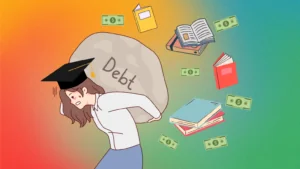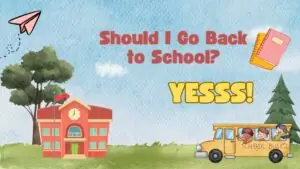A worrisome trend has surfaced in schools across the nation after the pandemic: test scores and attendance have plummeted, yet more students are earning high school diplomas. The situation raises concerns about the futures of these high school graduates, considering the declining rate of college attendance and completion.

✅ AI Essay Writer ✅ AI Detector ✅ Plagchecker ✅ Paraphraser
✅ Summarizer ✅ Citation Generator

The D.C. Policy Center, a nonpartisan research organization, presented some alarming figures in its March 2023 report. Nearly half of the district’s students (48%) missed 10% or more of the 2021-22 school year. Academic progress in math was obliterated, with only 19% of third through eighth graders meeting grade-level expectations, a stark decline from the pre-pandemic rate of 31%.
Despite these issues, the high school graduation rate reached a record 75%, a significant increase from the 68% recorded in 2018-19. However, fewer graduates are pursuing college education. Within six months of high school graduation, only 51% of the class of 2022 enrolled in post-secondary education, a drop from 56% in the class of 2019.
Bleak Projections and Nationwide Concerns
Based on the current trends, the D.C. Policy Center predicts that a mere eight out of every 100 ninth graders in the district will earn a post-secondary credential within six years of high school graduation. Before the pandemic, the projection stood at 14 out of every 100 ninth graders. Washington has long battled entrenched poverty and consistently low test scores. Rapid improvements were seen before the pandemic, but recent statistics indicate a sharp decline in educational outcomes.
Morgan Polikoff, an associate professor of education at the University of Southern California, is compiling reports from around the country to provide a broader picture of the situation in schools beyond the well-documented national slide in test scores. According to Polikoff, the trends in D.C. appear to be consistent across the country, with attendance down, grades up, high school graduation rates slightly up, and college enrollment down.
Educators and researchers are concerned that these post-pandemic trends are not limited to Washington but are unfolding across the nation.
Struggling to Keep Students Engaged and the Impact on At-Risk Students
Despite incentives like student awards, celebrations, and outreach to parents, the Washington report highlights the ongoing struggle to encourage regular school attendance in the 2022-23 academic year. The report also establishes a connection between poor attendance and low test scores. Students classified as “at-risk” due to homelessness, foster care, or families eligible for social welfare benefits experienced the lowest academic outcomes, as they had the highest rates of chronic absenteeism. Only 15% of “at-risk” students met grade-level expectations in reading, while a mere 6% did so in math.
The Mystery of High Graduation Rates Amid High Absenteeism
Further research is needed to understand why schools are awarding high grades to students who have not mastered the material and are graduating underprepared students. In some cases, graduation requirements have been eased. For instance, Washington suspended the 100-hour community service requirement for high school students. However, the minimum number of instructional hours was reinstated in 2021-22. The rise in high school graduation rates despite high absenteeism remains puzzling.
The Pandemic’s Grim Academic Toll: Oblivious Families and Unclaimed Tutoring Opportunities
As the pandemic’s consequences unfold, the severe academic impact becomes increasingly apparent, and many families remain unaware of their children’s predicament. National assessments indicate that 20 years of academic progress were wiped out in a year. Middle school students are lagging in math, and third graders are so behind in reading that curriculum and assessment company Amplify has warned that a third needs intensive remediation. Despite this, numerous reports show that parents are not signing their children up for free tutoring, even when schools offer it. This may be due to the perception that their children’s grades are strong and they are on track to graduate.
The Collapse in College-Going and Its Future Implications
The National Student Clearinghouse Research Center has documented a significant decline in college attendance since the pandemic began, particularly at community colleges. While economic reasons are often cited, with a strong labor market offering decent hourly wages for teenagers who opt to support their families instead of pursuing higher education, another crucial aspect has been overlooked. Many high school graduates may be ill-prepared for college or job training programs, even if they enroll in one.
If this trend continues, the country may face a shortage of young adults with the necessary skills to secure good jobs in the future, and companies may struggle to find skilled employees. This scenario could negatively impact the economy for everyone.
Related articles
Reddit Users Weigh In: The Impact of College Essays in the Admissions Process
Debunking the Classroom: Reddit’s Take on AI Detectors and Their Impact on Education
College Corps Program Eases Student Debt and Empowers Communities
Follow us on Reddit for more insights and updates.





Comments (0)
Welcome to A*Help comments!
We’re all about debate and discussion at A*Help.
We value the diverse opinions of users, so you may find points of view that you don’t agree with. And that’s cool. However, there are certain things we’re not OK with: attempts to manipulate our data in any way, for example, or the posting of discriminative, offensive, hateful, or disparaging material.